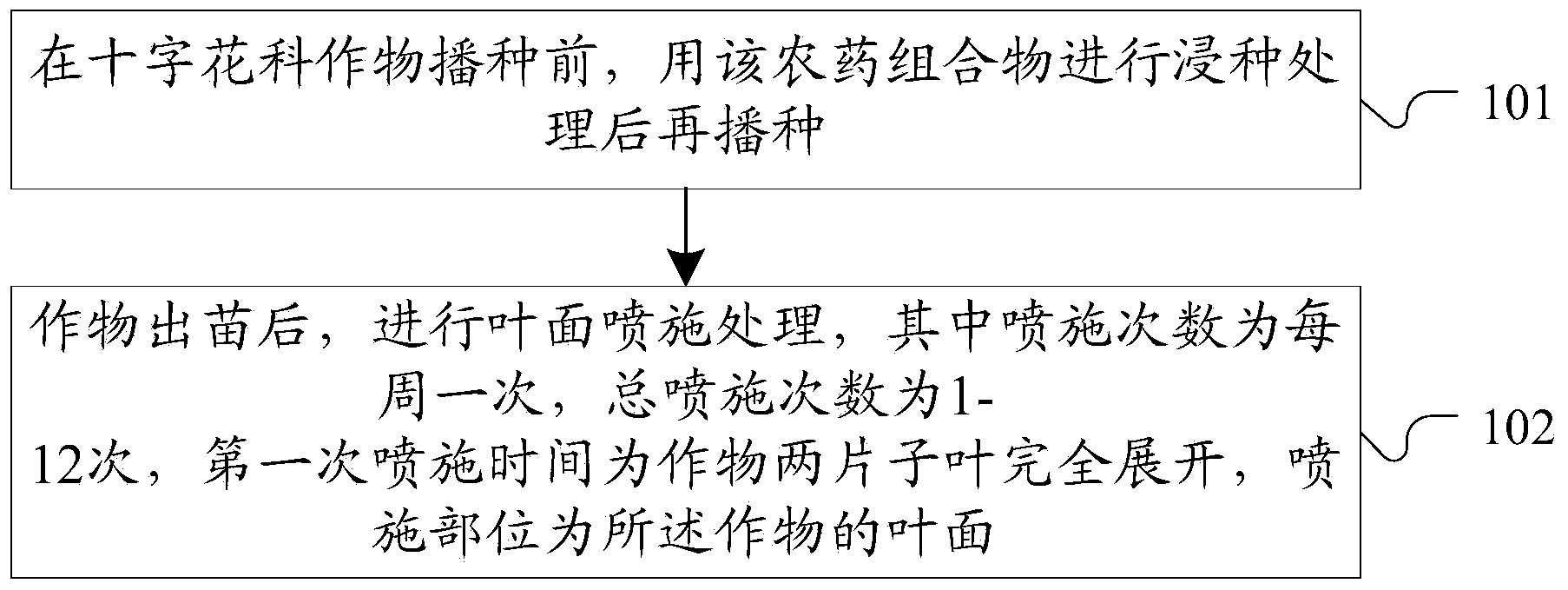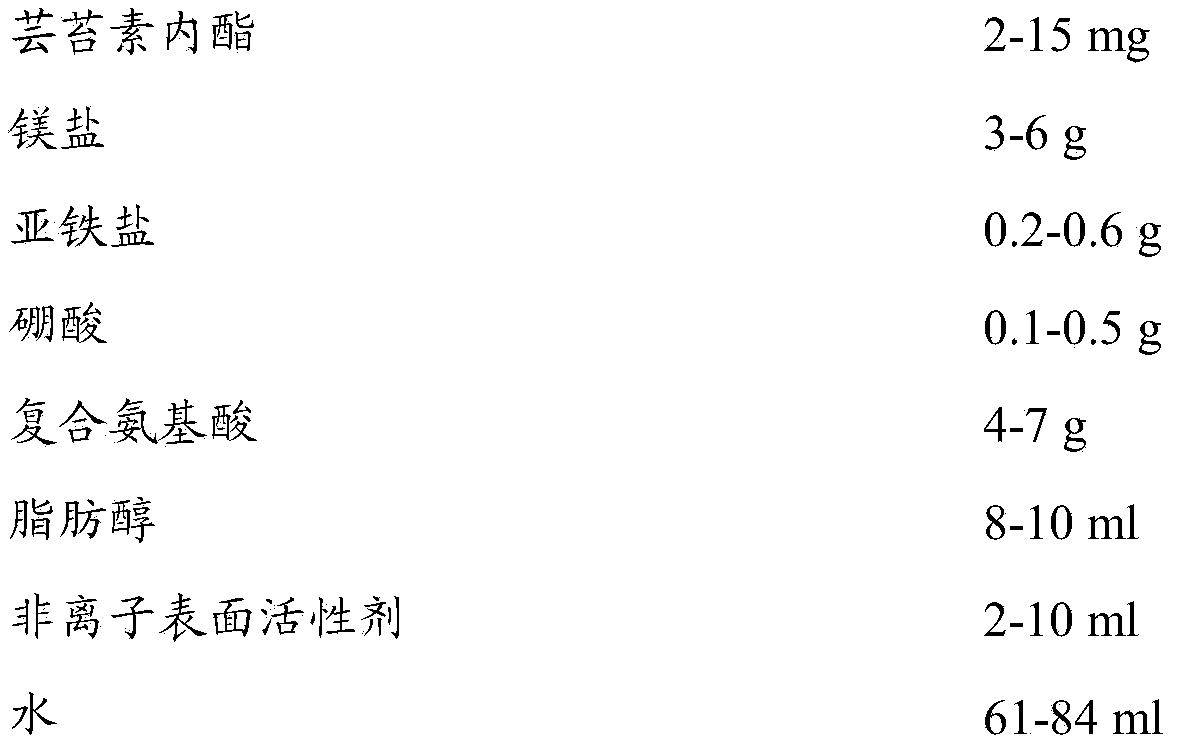Pesticide composition and method for curing cruciferae crop clubroot
A technology for cruciferous crops and pesticide compositions is applied in the directions of botanical equipment and methods, fertilizer mixtures, chemicals for biological control, etc., and can solve problems such as inability to cure club root disease on crops, and achieve low cost. , Enhanced resistance to stress, a wide range of effects
- Summary
- Abstract
- Description
- Claims
- Application Information
AI Technical Summary
Problems solved by technology
Method used
Image
Examples
Embodiment 1
[0045] In this embodiment, the Brassica napus seed is used as the test material, and the test method is as follows:
[0046] First dilute the test agent to five different concentrations of 0.01, 0.05, 0.1, 0.15 and 0.2mg / L, then put the rapeseed in the diluted solution, soak for 6 hours, remove it, wash and dry. After that, put it in a petri dish. Put two layers of qualitative filter paper under the seeds in each petri dish, add 10ml of water to make the filter paper repeatedly wet, and then place it in an artificial climate box for cultivation. During the test, observe from time to time, add clean water in time to prevent water loss, and ensure the same amount of water added for each treatment.
[0047] Each test concentration is set to 4 repetitions, each repetition is 100 seeds, and a total of 400 seeds are required. Choose clean rapeseeds, mix them thoroughly, and flatten them into a thin layer. Then randomly and accurately count 400 seeds. Set clear water control.
[0048] D...
Embodiment 2
[0054] In this example, the field efficacy test for preventing and treating root swelling of Chinese cabbage is taken as an example. The test method is as follows:
[0055] The soil acidification of the experimental field of Chinese cabbage is serious. After years of continuous planting, the disease of root swelling is serious (incidence rate is over 95%, disease index is 76). There are 3 treatments in the experiment, and each treatment is repeated 3 times.
[0056] The first experiment started with 2 leaves and 1 heart stage of Chinese cabbage. The stems and leaves were sprayed with brassinolide at a concentration of 0.15 mg / L, and sprayed every 10 days for 5 times. The control agent was irrigated with 75% carbendazim wettable powder 500 times liquid, 250ml per plant, and irrigated every 10 days for 4 consecutive times.
[0057] The data for the above-mentioned experiments were obtained when the Chinese cabbage was harvested, and 10 plants were randomly surveyed according to the pr...
Embodiment 3
[0071] In this example, the field efficacy test for preventing and treating root swelling of rape is taken as an example, and the test method is as follows:
[0072] The root swelling disease in the test rape field is severe (incidence rate is over 87%, disease index is 65.1). The first stubble of the test field was rice, and the test field was flat and typical loam. The soil moisture was relatively high during application, about 60%. There are 3 treatments in the experiment, and each treatment is repeated 3 times.
[0073] Firstly, the rape seeds were soaked with a drug solution at a concentration of 0.05 mg / L. After 6 hours, they were taken out and air-dried, and they were dried until semi-dry and then sowed. When the two cotyledons of the rape seedlings are fully expanded, spray the stems and leaves with a chemical solution with a concentration of 0.15 mg / L, and spray them every 7 days for 5 consecutive times.
[0074] The control agents were 10% cyanoxazol suspension and 50% fl...
PUM
 Login to View More
Login to View More Abstract
Description
Claims
Application Information
 Login to View More
Login to View More - R&D
- Intellectual Property
- Life Sciences
- Materials
- Tech Scout
- Unparalleled Data Quality
- Higher Quality Content
- 60% Fewer Hallucinations
Browse by: Latest US Patents, China's latest patents, Technical Efficacy Thesaurus, Application Domain, Technology Topic, Popular Technical Reports.
© 2025 PatSnap. All rights reserved.Legal|Privacy policy|Modern Slavery Act Transparency Statement|Sitemap|About US| Contact US: help@patsnap.com



